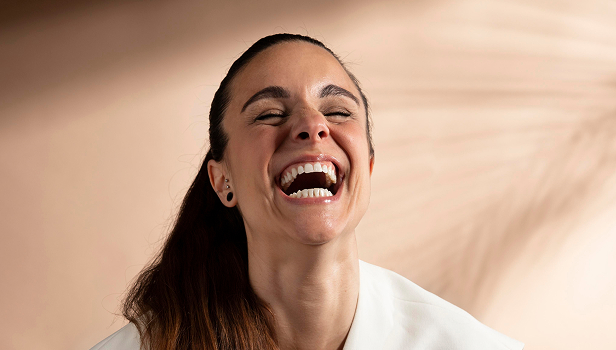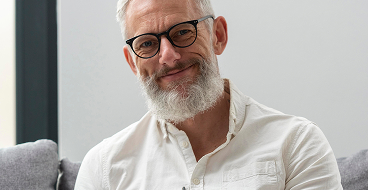
Hyperbaric Oxygen Therapy
Increase the Amount of Oxygen in the Blood
Hyperbaric oxygen treatments (HBOT) use a combination of elevated air pressure and breathing in concentrated oxygen to greatly increase the amount of oxygen in the blood. HBOT has been found to reduce shedding after hair transplant surgery, as well as reduce folliculitis and itchiness, providing evidence that HBOT is useful as adjuvant therapy for hair transplant surgery.
Here follows a full guide on everything you need to know about HBOT.

What Is HBOT?
What is Hyperbaric Oxygen Therapy?
There are two components to HBOT – increased oxygen levels and increased ambient air pressure. Simply put, Hyperbaric Oxygen Therapy, otherwise known as Hyperbaric Oxygen Chamber Treatment or HBOT, is an FDA-approved, non-invasive, drugless therapy used to help boost the body’s natural healing processes.
These treatments are also commonly referred to as “dives” because the Hyperbaric Chamber is pressurised to roughly 2.2 ATA (atmospheres absolute), which is equivalent to scuba diving 40 feet underwater.
Historically, hyperbaric oxygen therapy was first used in the U.S. in the early 1900s to treat influenza. It was later used to treat decompression sickness, a common danger of scuba diving.
These days, Hyperbaric Chamber Treatment is used to treat various conditions and injuries which will all be discussed in this article.
How HBOT Causes Hyperoxia and Why This is a Good Thing
Research shows that the amount of gas that is dissolved in a liquid, such as the bloodstream, for example, is directly proportional to the partial pressure of gas at the surface of the liquid and the air pressure that the body is under.
By breathing 100% oxygen while in a pressurized chamber, Hyperbaric Oxygen Therapy increases the amount of oxygen in the patient’s blood. This is called Hyperoxia, which is the high level of oxygen in the blood, resulting in improved oxygen delivery to oxygen-deficient tissues in the body, known as Hypoxic tissues or Hypoxia.
Hypoxia may be initiated by various conditions such as lung disease as a result of bronchitis, pulmonary edema (excess fluid in the lungs), chronic obstructive pulmonary disease (COPD), emphysema, or pneumonia. Alternating phases of hyperoxia and hypoxia, as it occurs during a series of Hyperbaric Oxygen Therapy Sessions, promotes the growth of new blood vessels into the hypoxic tissues, a process known as neovascularization.
This is the process of the natural formation of new blood vessels, usually in the form of functional microvascular networks, defining a microenvironment inside healthy or pathological tissues. This microvascular network is composed of terminal arterioles, capillaries, and postcapillary venules, all of which carry the extra oxygen throughout the body so that injured and oxygen-deficient tissues may begin healing.
Therefore, the Hyperbaric Oxygen Chamber results in increased red blood cells in response to ischemia, which is a condition in which blood flow and oxygen is restricted to or reduced in a particular part of the body.
Ideal of MeD’s Hyperbaric Oxygen Therapy Experience
While our patients lay in the multi-person chamber, they will breathe in 100% oxygen while subject to increased atmospheric pressure. Compression, defined as the process in which the chamber pressurizes, usually lasts about 10-15 minutes.
Patients may feel a sensation of “fullness” in their ears as a result of the increased pressure, known as pressurisation. This sensation compares to the feeling of diving down to the bottom of a swimming pool or take-off and landing in the beginning and at the end of a flight.
Our helpful hyperbaric chamber technician will assist our patients by advising them on simple methods to relieve this “fullness” in the ears to avoid discomfort throughout the treatment. These methods may include yawning, taking small sips of water, swallowing or pinching the nose and very gently blowing. If the pressure is not relieved, the chamber technician may end your session early to avoid ear barotrauma, which will be discussed later in the article.
Patients are free to watch television, sleep or just rest during the remainder of the treatment. As the treatment comes to an end, the chamber pressure will gradually descend over a period of 10 to 15 minutes, this is known as decompression.
During this decompression, patients may experience a popping sensation which is a normal effect of pressure adjustment inside the ears.
Treatment for more serious conditions or wounds usually last about two hours and are advised to be repeated 5 days a week for 4-8 weeks.
The benefits of Hyperbaric Oxygen Therapy
Modern science has recognised the powerful effect that hyperbaric oxygen treatment has on treating certain medical conditions such as carbon monoxide poisoning, cyanide poisoning, gas gangrene, decompression sickness (commonly affecting deep-sea divers), inadequate blood flow to the tissues, wound healing and skin grafts. This treatment involves a person being in an enclosed chamber while 100% oxygen is pumped in at high pressure.
Anti-ageing benefits of HBOT
Cells are the building blocks of tissues, and they undergo various changes as we age.
Here is a breakdown of exactly how HBOT contributes to anti-aging:
- The telomeres, defined as the ends of chromosomes in our cells, progressively shortens each time the cell divides.
- Our cells divide as we grow, to repair dying cells and replace dead cells.
- HBOT promotes cell repair and the repair of age spots, saggy skin, wrinkles, poor collagen structure, skin cell damage by increasing circulation to the skin which results in the lengthening of the telomeres up to 38%, as well as a decrease of about 37% in the presence of ageing cells.

Reversal of Premature-Aging as a result of HBOT
“Premature ageing” is a shortened lifespan due to the effects of various stressors on the human body, such as alcohol, tobacco, and drugs. Tobacco alone may cause a reduction in lifespan of up to 15%.
This means that if we consider the average lifespan to be about 80 years, a smoker is estimated to live to around 68 years of age. Their lifespan is usually cut short due to cancer or other health issues like emphysema and heart attacks.
Insults to the human body may cause progressive wounding of the body and brain. Wounds in the brain lead to low blood flow or low oxygenation, which cause decreased neurological function.
This decreased neurological function leads to the premature ageing diagnosis called dementia. Hyperbaric Chamber Therapy assists in the repair of these brain wounds through increased blood flow for extended periods over 4-8 weeks. Repair of these wounds acts as a reversal of premature ageing.
HBOT boosts the formation of new skin cells and collagen, otherwise known as connective tissue, by encouraging new blood vessel formation. Hyperbaric Oxygen encourages cells to produce substances like vascular endothelial growth factor, defined as a signal protein produced by many cells, acting as a stimulant for the formation of blood vessels.
These signal proteins attract and stimulate endothelial cells that form a barrier between blood vessels and tissue, controlling the flow of fluid substances in and out of the tissue. Simply put, the increased production of collagen and vascular endothelial as a result of the Hyperbaric Oxygen Chamber leads to increased skin elasticity and the reduction of fine lines and wrinkles.
Fast-tracked wound-healing benefits
Hyperbaric oxygen therapy is used for specific types of wounds. These include radiation injuries, infections, burns, certain skin grafts and flaps, crush injuries, frostbite and diabetic-related wounds. There are two parts of the body’s cells involved in healing that depend on oxygen, those being the mitochondria, which is considered the powerhouse of cells, and the stem cells that act as a repair system in the body.
Oxygen is primarily delivered to wounds through your blood system. During hyperbaric therapy, however, your entire body undergoes the treatment resulting in the oxygen reaching further than your arteries. The added air pressure inside the hyperbaric chamber concentrates the delivery of oxygen to specific areas, such as a wound.
This high dose of oxygen stimulates the influence of the mitochondria in the cells, which provide the cells with energy and improved vitality. Even more, it attracts stem cells, also known as the healing cells, to the broken tissue for repair.

Treatment of Hydrogen Cyanide and Carbon Monoxide Poisoning
Patients admitted to the hospital due to fire accidents have almost always been exposed to both Hydrogen Cyanide (HCN) and Carbon Monoxide (CO). Cyanide (CN) intoxication results in histotoxic hypoxia, which refers to the inability of cells to take up or use oxygen from the bloodstream, leading to organ dysfunction and possibly death.
Research has shown that HBO therapy increases the elimination rate of CO haemoglobin in proportion to the increased oxygen pressure. The purpose of oxygen therapy in treating carbon monoxide poisoning is to reduce the amount of carbon monoxide in the blood and restore the oxygen level to normal as quickly as possible.
Why is Hyperbaric Oxygen Therapy used in hair transplant recovery?
Patients will likely need more than one session to benefit from hyperbaric oxygen therapy. The number of sessions is dependent upon the medical condition at hand. Some conditions, such as carbon monoxide poisoning can be treated in about three visits. Others, such as non-healing diabetic wounds, may even require 40 treatments or more.
These HBO treatments usually form part of a comprehensive treatment plan and work in conjunction with other therapies and drugs that are designed to fit the individual’s needs.
Hyperbaric oxygen therapy is an effective adjunctive therapy for hair transplantation, as it minimizes post-operative follicle shedding and leads to reduced itching and folliculitis, an infection of one or more of the pockets from which hair grows, also known as hair follicles. Many hair-transplant patients who have undergone HBOT post-operation have reported decreased pain, swelling, and bruising.
A Study on the Effectiveness of Hyperbaric Chamber Treatment
A study was conducted in 2020 to evaluate the scientific effectiveness of Hyperbaric Oxygen Therapy as an adjuvant therapy, defined as a therapy that is given in addition to the primary therapy to maximize its success, for hair transplantation surgery.
Thirty-four patients with II-IV alopecia were randomly divided into the control group and HBOT group. The control group was treated with a routine FUE (Follicular unit extraction) procedure, while the HBOT group was treated with Hyperbaric Oxygen Therapy, just as patients on our exclusive packages are treated to. These patients were treated with 100% oxygen at an increased atmospheric pressure of 2.0 ATA for 60 minutes through a facemask and underwent this therapy daily for 1 continuous week post-operation.
The results showed a significant decrease in itching and folliculitis amongst the HBOT group in comparison to the control group (HBOT group: 11.8%; Control Group: 35.3%). In addition, HBOT resulted in a lower post-op shedding rate (27.6 ± 2.6% vs 69.1 ± 2.4%).
How to treat the potential side effects of Hyperbaric Oxygen Therapy
HBO therapy is well tolerated by most people, with most being able to tolerate and complete a 2-hour therapy dive without any accidental consequences. A study on HBOT was conducted by a professional facility.
Throughout the year-long study, the side effect rates were found to be as little as 0,4% with half of all undesirable side effects being ear pain and a quarter of the side effects being claustrophobia as a result of lying in a chamber for 2 hours. Other potential side effects include acceleration of cataract growth (a clouding of the lens of the eyes) or lowered blood sugar while in the chamber.
Any air-filled cavity in the body can be affected by pressure change. This includes the patient’s nasal sinuses, bowels, bladder, and lungs. Typically, the body will adjust to pressure changes effectively. The body’s ability to adjust to pressure changes is demonstrated in the way people contentedly travel in aeroplanes, submarines, and down mountains all of the time.
There are ways to ease the potential side effects of hyperbaric therapy, such as barotrauma. One of the simplest ways is for the chamber operator to adjust the rate of pressurisation and oxygenation to lessen the patient’s symptoms. Therefore, it is key that the patient informs the chamber technician if they are feeling uncomfortable or experiencing any pain.
Those suffering from severe ear trauma prior to HBO therapy may benefit from having tubes placed into their ears by an ear, nose and throat doctor. Those struggling with anxiety about entering the oxygen chamber may benefit from natural medication designed to help ease stress. However, it is advised that patients taking any form of medication before their therapy treatment, organize a designated driver for after their treatment.

Hyperbaric Oxygen Therapy and The Ketogenic Diet
The Ketogenic Diet used in conjunction with Hyperbaric Oxygen Therapy has been found to assist with cancer prevention.
Abnormal cancer metabolism creates a glycolytic dependency, which can be exploited by lowering glucose availability to the tumour. The ketogenic diet is a low-carbohydrate, high-fat diet that results in a decreased blood glucose level and elevated blood ketone levels which has been shown to slow cancer progression in both animals and humans.
Abnormal tumour structures form hypoxic (an absence of sufficient oxygen) pockets that stimulate cancer progression and further boost the glycolytic dependency of cancers.
Hyperbaric Oxygen Therapy essentially hyper-oxygenates these tumorous tissues, reversing tumour hypoxia and activity of the unoxygenated, cancerous pathways in tumorous tissue.

Hyperbaric Oxygen Therapy and Fasting
The scientific community has touted the use of fasting to help people with sluggish metabolisms jump-start their weight-loss journey. Fasting is defined as deliberate abstinence from food for an extended period. Fasting has been proven to fight inflammation, improve heart health and cognitive capability. Hyperbaric Therapy in conjunction with a routine of fasting is believed to result in severely low BGL.
As fasting results in decreased blood glucose levels (BGL), it is widely believed that HBOT is unsuitable for patients who are fasting for weight-loss benefits due to the well-recognised phenomenon that HBOT results in decreased BGL.
The National Library of Medicine (NIH) remarks on a study that was conducted using 39 participants who were each evaluated once during HBOT for 90 minutes and once during a control session using normobaric air. These sessions were held up to two weeks apart and participants were instructed to eat the same diet. BGL was measured before, during, and upon completion of each session.
The results showed that there was a small but statistically significant decrease in BGL in both the HBOT and control air sessions. This fall did not differ between the two conditions, meaning that there were no statistically significant differences in BGL when HBOT treated patients were compared to normobaric air treated patients.
In conclusion, BGL may decrease during HBOT and it should be monitored before entering the chamber, this is why it is advised that patients, especially diabetics, eat a light, nutritious meal one to two hours prior to the start of their treatment to maintain glucose levels. This being said, whether regular participants in fasting or not, as long as patients eat one to two hours before the therapy as advised, their BGL will be manageable.
FAQs
Hyperbaric oxygen treatments are usually painless, but patients may experience a full sensation in their ears. To avoid this, patients are taught specific maneuvers such as taking small sips of water, swallowing or pinching the nose and very gently blowing.



